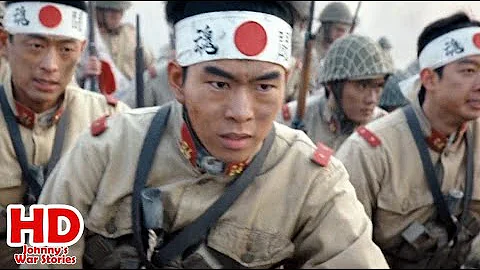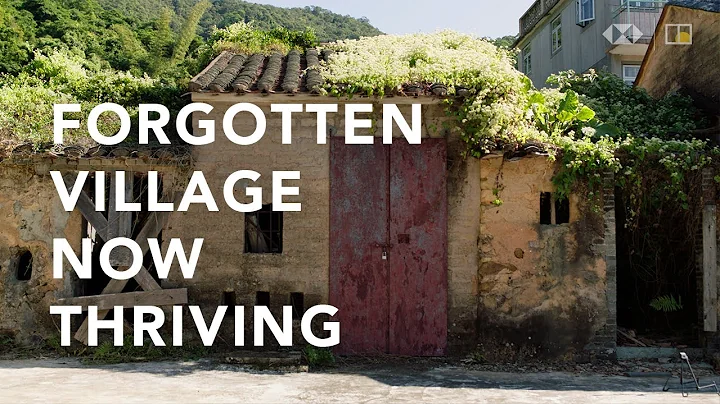Li Dengxingyi was the captain of the 77th Infantry Regiment of the 39th Brigade of the 20th Division of the Japanese Army. He led his troops to invade North China on July 19, 1937. He can be said to be the earliest Japanese infantry to invade North China. One of the captains of the regiment, he also participated in the "Battle of Niangziguan", "Battle of Zhongtiao Mountain" and "Second Battle of Changsha". His highest military position was the commander of the Seventh Division of the Japanese Army. He eventually fought against the US Army in Hokkaido, Japan. Surrender.

Koi Nobori Yuichi
Koi Nobori Yuichi (1891-1972) was a native of Gunma Prefecture, Japan. After graduating from junior high school, he studied at the Kumamoto Army Regional Infant School and the Central Army Infant School. He graduated from the Army Sergeant School in May 1912. 24th Infantry Division, admitted to the 36th Army University on December 14, 1921, along with Miyazaki Shigesaburo, Oshiro Sanji, Isayama Haruki, Kono Etsujiro, Kawamura Sanro, Nakaaga Taro, Arisu Seizo, He was a classmate of Ayabe Tachibana and others, and graduated on November 29, 1924. He was assigned to the 2nd Infantry Regiment of the 27th Brigade of the 14th Division as a squadron leader.
In December 1925, Koichi Koichi was transferred to the General Staff Headquarters, and was promoted to Army Major in March 1928. After that, he served as a staff officer in the 16th Division of and the 2nd Division of , and served as a staff officer in the 16th Division of . The 11th Infantry Regiment of the 9th Brigade of the 5th Division was attached to the team. After being promoted to Army Lieutenant Colonel in August 1932, he was transferred to the 22nd Infantry Regiment of the 10th Brigade of the 11th Division and served as a military trainer at Songshan High School. Instructor, and later served as a staff officer in the 14th Division .
On August 1, 1936, Koichi Koichi was promoted to Army Colonel and was transferred to the Japanese Army in Korea. He served as the captain of the 77th Infantry Regiment of the 39th Brigade of the 20th Division. After the " July 7th Incident" broke out, The 20th Division set off from North Korea by boat on July 16, and landed at Dagukou, Tianjin on July 19. It was assembled in the Tangshan and Shanhaiguan areas, and was incorporated into the combat order of the Chinese Garrison Army, becoming The first fully integrated division of the Japanese army to invade North China. At that time, the division commander was Lieutenant General Kawagishi Bunzaburo, the chief of staff was Colonel Kimura Hisashi, and the 39th Brigade was Major General Takagi Yoshito.

The Japanese
20th Division during the offensive had successively participated in the attacks on Nanyuan, Changxindian, Langfang and other places. When the North China Front was established on August 31, it was incorporated into Xiangyue. The combat sequence of the First Army of Qingsi was to participate in the attack on the northern section of Pinghan Road. In order to plunder Shanxi's coal resources, it attacked and advanced along the Zhengtai Line in the direction of Taiyuan, and the 77th Infantry Regiment as the vanguard was divided again. The two pursuit teams on the left and right pursued one way toward Taiyuan from the direction of Jingxing and Jiuguan, and the other pursued along the Zhengtai Line toward Taiyuan.
After the 39th Brigade of Lidengxing 1st Regiment was blocked by the Chinese army, the main force of the 20th Division, which was resting and on standby near Shijiazhuang, moved in with all its strength and was attacked by Yan Xishan's Second War Zone in the Niangziguan area. Blockade, known as the "Battle of Niangziguan" in history, but the 20th Division quickly captured Niangziguan and assisted Itagaki Seishiro's Fifth Division to occupy Taiyuan City. The Japanese First Army Headquarters was established In Taiyuan City.

The First Army Headquarters Building
On March 31, 1938, Koichi Koichi was transferred back to Japan and served as an attachment to the Ordnance Factory of the Ministry of War Affairs Bureau. On March 9 of the following year, he was promoted to Army Major General and transferred to the Sixth Division. Attached to the headquarters of the left-behind division, but less than a month after taking office, he was transferred to the principal of the Kumamoto Army Infant School to train Japanese teenagers who are not yet good at gun skills. Japanese militarism begins to train military talents from teenagers.

Japanese Army Infant School Student
On November 30, 1940, Koichi Koichi was transferred back to the North China Front Army, replacing Major General Taijiro Iida who was killed by the Eighth Route Army, and served as the infantry commander of the 35th Division to assist the division. Lieutenant General Nagaharada Kumakichi commanded the operations. The division consists of the 219th Infantry Regiment, the 220th Infantry Regiment, and the 221st Infantry Regiment. The division headquarters is directly under the command of the 35th Search Regiment, the 35th Field Artillery Regiment, and the Engineer Regiment. The 35th Regiment, the 35th Regiment of Heavy Troops, Communications Team, Ordnance Service Team, Health Team, 1st to 2nd Field Hospital, etc. are stationed in the Xinxiang area of Henan Province and are responsible for guarding and maintaining the occupied areas.
In May 1941, Commander Tada Shun of the North China Front gathered more than 100,000 Japanese troops and launched the "Battle of Nakatiao Mountain". The 35th Division, as a division directly under the North China Front, fought with Tanaka Hisashi's 20th The First Division participated in the "Battle of Zhongtiao Mountain" from the east front, attacking and advancing towards Shaoyuan from Qinyang and Wenxian respectively. Li Dengxingyi, as the infantry commander of the 35th Division, He led three infantry regiments at the forefront of the attack and divided his troops into three routes to attack Jiyuan, Mengxian and other places.

The Japanese army entered Niangziguan
Because the Japanese army was fully prepared and assembled superior forces, the military disparity between China and Japan was too great. The Chinese army was severely damaged by the Japanese army and was defeated miserably. Tang Huaiyuan, Cun Xingqi, Wang Jun, Liang Xixian, Chen Wenqi, etc. Senior generals of the national army died heroically for their country. This battle was also called "the greatest shame in the history of the Anti-Japanese War" by Chiang Kai-shek .
In September 1941, the 35th Division was assigned to the Eleventh Army of Anan Weiji . The division set out from Xinxiang, crossed the Yellow River south, captured Zhengzhou, and went south along the Jinghan Road to participate in the After the Second Battle of Changsha, he returned to the Xinxiang garrison. As a division directly under the North China Front Army Headquarters, he often carried out large-scale raids on the North China Anti-Japanese Base Areas and brutally implemented the "Three Guangs" policy of Okamura Ningji .

The Japanese army occupied the county.
On November 6, 1941, Yukiichi Koichi was promoted to Army Lieutenant General and was transferred back to Japan. He succeeded Lieutenant General Noboru Kunisaki as the commander of the 7th Division, which included the 26th Infantry Regiment and the Infantry Division. The 27th Regiment, the 28th Infantry Regiment and the 7th Mountain Artillery Regiment, etc., served in the Kwantung Army for a long time. Until August 1940, they were transferred back to Japan from the Kwantung Army for rest and were deployed to serve as security guards in the Hokkaido area. Task.
In August 1942, the 28th Infantry Regiment under the command of the 1st Division of Koidengying was drawn out and organized into the "Ichiki Detachment" with a total strength of 2,507 people. Colonel Kiyonao Ichiki served as the detachment leader and was sent to the In the battle of Rabaul in the northeastern part of New Britain Island in the South Pacific, he failed in the battle for Henderson Airport and was forced to commit suicide by caesarean section. Ichiki Kiyoshi was also one of the culprits in provoking the "Marco Bridge Incident". At that time, he served as the captain of the 3rd Battalion of the 1st Regiment of the Infantry Brigade of the Chinese Garrison Army.

Internet stills
The main force of the 7th Division was once transferred to the Northern Kuril Islands for garrison, but eventually returned to defend Hokkaido. The 25th Infantry Regiment was drawn out in February 1945 and mixed with Huata to form the 88th Brigade. The division was stationed on Sakhalin Island in the South Sakhalin Islands, while the main force of the 7th Division was stationed in northern Hokkaido. It finally ushered in unconditional surrender on August 15, 1945. Due to the delay in the U.S. military landing on the Japanese mainland, the 7th Division was stationed in the northern part of Hokkaido. The Seventh Division was the last unit to surrender to the US military.
Li Dengxing was not demobilized until December 1945. His subsequent experiences are unknown, and he finally died of illness at home on November 17, 1972. He was awarded the Golden Horse Medal with Merit Level 4 and Level 3.



![China vs Japan in WW2 - Hilltop battle [Eng Sub]《太平轮》开片战斗 - DayDayNews](https://i.ytimg.com/vi/884dCneDEjQ/hqdefault.jpg?sqp=-oaymwEcCOADEI4CSFXyq4qpAw4IARUAAIhCGAFwAcABBg==&rs=AOn4CLBgxIioY3oPTYNKdCM1g6eddqt30A)

















